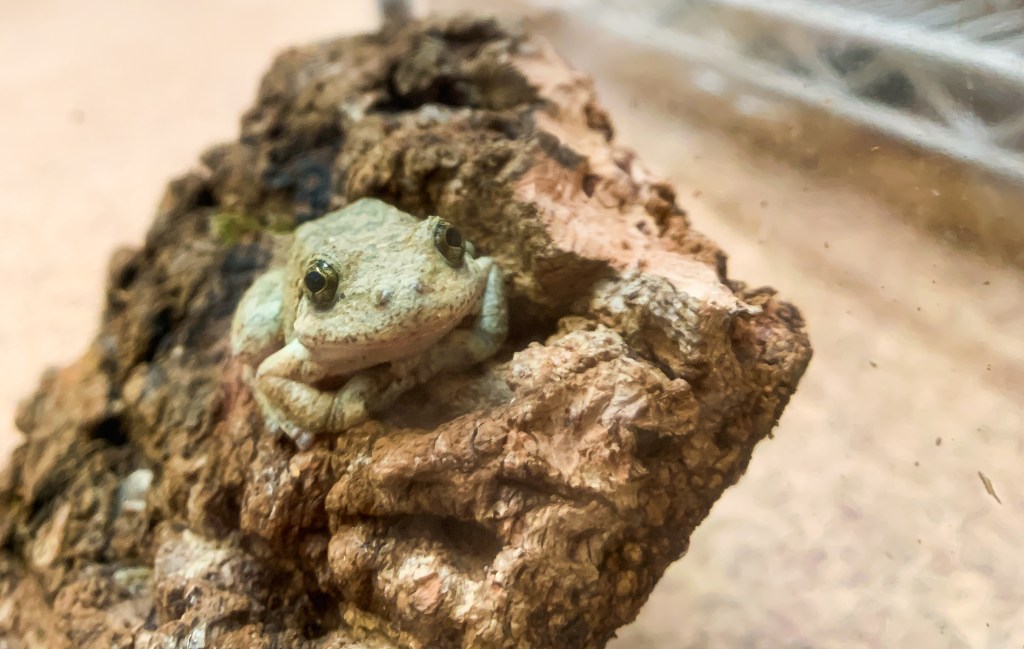OIL’S WELL THAT ENDS WELL: Two weeks ago, I razzed Andy Caldwell — the loudest, longest, hardest-working member of Santa Barbara’s vast right-wing conspiracy — for at times being, well, shrill. In part, I was hoping to demonstrate that the word “shrill” was not inherently sexist. I thought I made my point. Andy responded, telling me I had missed not just the point but also the story. Unfortunately, he was right too.
The story involved a slow-moving bureaucratic train wreck of ineptitude by government agencies that allowed about 630 gallons of crude oil to ooze out of a pipeline burned during the 2017 Thomas Fire and into Toro Creek, thus killing 17 small birds, 13 bats, and one squirrel. In addition, 92 small frogs had been so traumatized they had to be sent to animal rehab, where they enjoyed a steady diet of miniature crickets.
Mistakes happen. But the real problem here was that the federal, state, and local agencies charged with preventing and cleaning such oil spills instead engaged in a jaw-dropping lassitude of buck passing, which has seriously delayed any cleanup.

Back in 1882, the Occidental Mining and Petroleum Corporation drilled 210 feet into the face of Toro Canyon’s steep, treacherous hillside, about 1,600 feet above sea level, between Summerland and Carpinteria. Searching for oil, they stumbled onto something even more valuable — water.
For the next 60 years, they sold that water to the kooky, spooky community of Summerland, whose early inhabitants famously spoke with the dead and less famously supported such causes as the abolition of slavery and a woman’s right to vote.
Along the way, Occidental disappeared, leaving behind an open-pit mining tunnel that was still oozing about 30 gallons of oil a day. By 1992, that oil got into the creek and made its way into the ocean. California Fish and Wildlife intervened, requiring the property owner to install equipment to separate and store the oil from the water.
In 1997, a vandal destroyed that device, known as an oil/water separator, allowing 3,000 gallons of crude oil to cascade downstream four and a half miles to the Pacific Ocean. This got the attention of the EPA and the Coast Guard, who — along with Fish and Wildlife — declared the disaster a Joint Incident Command.
The EPA built a quick-and-dirty, low-tech solution — another oil/water separator that could hold up to 6,000 gallons and loudly congratulated itself for its ingenuity. It was so low-tech, in fact, that the EPA, we would learn later, never bothered applying for any of the necessary permits.
Ten years later, the EPA passed the buck to the state’s Regional Water Quality Control Board, which in turn contracted with Santa Barbara County Public Works Department to handle the day-to-day cleanup. That contract expired in 2019.
All this is important because when a county water-quality ranger first discovered the oil leak on August 3, 2020, it was totally unclear where the proverbial buck stopped and out of whose pocket that buck would come.
What we know is this: On August 21, 2020, county employee Cathleen Garnand notified all state emergency response officials that an oil spill — about three feet by five feet and one foot deep — had saturated the ground about 15 feet from Toro Creek. Though she concluded that the oil was not likely to reach the creek, on September 30, county firefighters installed a couple of booms in the creek downstream from the spill site just in case.
By January 22, 2021, the situation changed drastically. Garnand was freaking out. “The leaking oil has now reached the creek. The impact grows ever more challenging every day,” she wrote state emergency planners, urgently pleading for help. “Whatever the oil response team has in their toolbox; we may need more than booms right now.”
However, cleanup did not begin until July 6, 2021. That’s almost a year after the leak was first detected and more than six months after Garnand’s hair-on-fire red alert. Good thing no one was at risk other than the 17 birds, 13 bats, and one squirrel.
County Public Works administrators spent the intervening time haggling with the state’s regional water board, renegotiating the contract and the $140,000 fee for emergency cleanup work.
Then the water board insisted the contract get approval from the county supervisors. That date would get delayed. The water board also insisted that all cleanup contracts the county signed be put out to bid first.
I’m not making this up.
When the supervisors finally got around to approving the deal in early May, oil was still leaking into the creek.
When Caldwell pitched a fit two weeks ago, he was, in fact, a little shrill. He likened the Toro Creek spill to the Plains All American Pipeline disaster of 2015, in which 144,000 gallons of oil got into the ocean. He likened it to infamous spills of Greka Oil, such a serial environmental offender that the company had to change its name. Where were all the outraged enviros? he demanded. If an oil company were involved, he charged, you couldn’t have shut them up.
He’s got a point. But maybe the bigger point here is that oil rarely ends well. Like, almost never.
The sweet, kooky community of idealists, dreamers, and psychics first envisioned by Summerland’s founder, Henry Lafayette Williams, got iced out by the onslaught of big oil. Summerland’s very first well was drilled in 1877. By 1900, 22 companies were drilling 305 wells there. Even back then, 59 wells had been abandoned. Many of those, we now know, never got cleaned up. We are still paying the price today.
Good thing I’m a dog and not a bat, a squirrel, or a bird.





You must be logged in to post a comment.